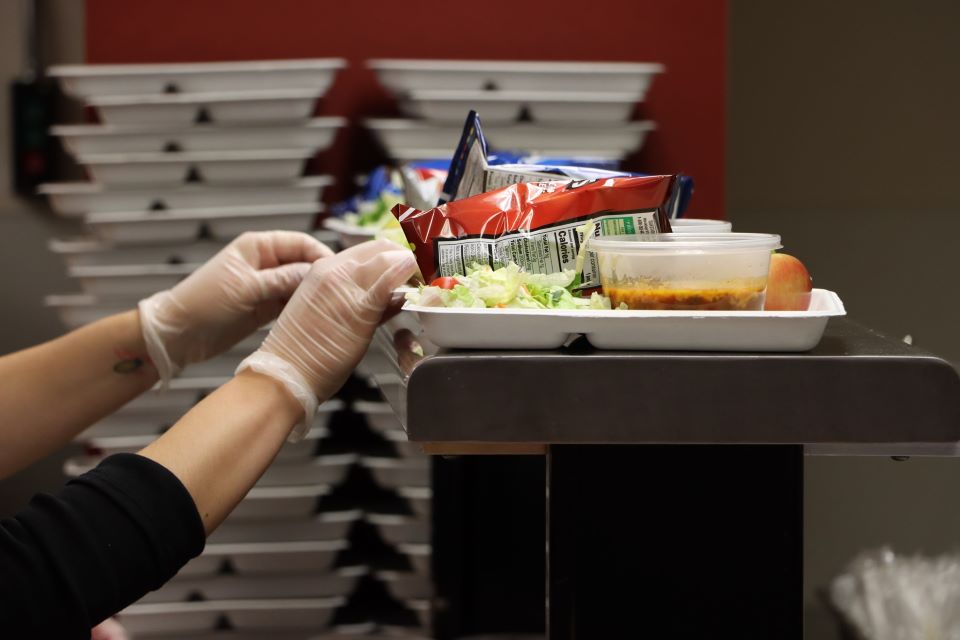Jefferson County kids rely on free school meals – their continued funding faces uncertainty
Published 11:04 am Friday, May 23, 2025
In Jefferson County’s two largest school districts, 509J and Culver, students can count on receiving breakfast and lunch every day — regardless of their family’s income. But behind those daily meals lies a fragile financial system, largely dependent on federal funding that may soon face scrutiny and cuts.
For Jefferson County School District 509J, which serves almost 3,000 students across Jefferson County and Warm Springs, the numbers are clear: of the $3.2 million allocated to food services in the 2024–25 budget, $2.29 million comes from federal funds. That money allows the district to participate in the Community Eligibility Provision, a federal program that enables all students to receive free meals without having to apply individually, because such a high percentage of students were eligible for the program.
In nearby Culver School District, which serves 670 students, federal money plays a similar role. Of the $481,055 nutrition services fund budget at the district, 61% of the funding comes from federal sources.
Trending
These numbers just take into account direct federal funding, but districts also receive funding from the state, which is initially funded by the federal government.
But the support doesn’t stop at meals. The districts also receive a combined $1.5 million in Title I grants — federal money designed to support students from low-income families. That funding is used not just for food, but to pay for teachers, support staff, interpretation services, social work, tutoring programs, and classroom materials.
Both districts also receive support from the federal Rural Education Achievement Program, which sends funds to small, rural schools to help with the unique challenges of rural education. Jefferson County 509J received $96,503 from REAP this year. Culver SD 4 received $6,765.
How is eligibility determined
These programs determine eligibility using one of two methods. Schools can use census and economic data to determine the eligibility of their students for programs. When a high enough percentage of students is reached, the entire school becomes eligible for the program, rather than the district registering each individual student.
At 509J, the district applied for community eligibility, meaning all students would be provided free meals, in 2014, where they were approved for four years. In 2017, their rate was lowered to 92.62% of students receiving free meals. In 2021, that percentage was increased to 93.7%, and in 2024, the district was approved again for 100% participation in the free meal program, and will, if funding is not cut, remain eligible until the 2027-28 school year. At CSD, all students are currently eligible as well through the community eligibility program.
Trending
A quiet concern: what happens next?
While this funding is still included in the federal budget for now, those that administer these grants, school officials, lawmakers and advocates are increasingly worried about what may come in future budget cycles.
As the federal budget for fiscal year 2025 still remains unpassed, many proposals to cut this funding, partnered with significant cuts to the departments that operate these funds, like the Department of Education and the National Center for Education Statistics, means the future of the funding is uncertain.
In Washington, D.C., federal lawmakers are laying the groundwork for negotiations on the fiscal year 2026 budget. And while current proposals to cut education spending haven’t advanced, Republican lawmakers have indicated that they may push to reduce Title I funding and convert federal grants into lump-sum payments that states could use as they see fit.
According to the Food Research & Action Center and the National Center for Education Statistics, nearly 50% of Oregon students would be affected by major cuts to federal nutrition and education programs. Nationwide, one estimate suggests that roughly one in four public school students could feel the impact.
Federal education dollars are especially critical in places like Jefferson County, where state and local funding sources often fall short of meeting student needs. 509J received $11.4 million in federal funds in the 2024-25 fiscal year. CSD received $1.06 million, 6% of their budget, from federal sources.
The departments that determine eligibility for these programs have been part of the sweeping cuts to the federal department. The Trump administration announced an executive order on March 20 to close the Department of Education, the primary entity administering these funds. The National Center for Education Statistics — used to determine eligibility for many federal education programs — has reportedly shrunk from around 100 employees to just three.
What Title I and REAP fund in local schools
The federal Title I-A program, created in 1965 as part of President Lyndon B. Johnson’s War on Poverty, is the largest source of federal aid to K–12 schools. It provided more than $18.38 billion in funding across the country this fiscal year, targeting schools with high concentrations of low-income students.
REAP, while much smaller in scope at $215 million nationwide, fills in important gaps for districts that face geographic and logistical challenges — especially in places like rural Oregon, where schools often operate far from centralized services.
The grants can be used flexibly. In Jefferson County, they help pay for critical services like food programs, as well as teacher salaries and support staff, interpretation and translation for families, social work, student mental health support, supplemental learning needs, technology needs and instructional materials.
Why free meals matter
Research has shown that universal meal programs help reduce lunch stigma, improve attendance, and can even boost test scores. Families with access to free meals at school also report fewer struggles affording groceries, according to multiple national studies.
Regular access to nutritious meals is closely tied to academic success. When students come to school hungry, it’s harder for them to focus, retain information, and stay engaged in class,” according to the Food Research and Action Center. Studies from the CDC and USDA, which have also seen federal cuts, have consistently shown that well-fed children have better concentration, improved memory, and stronger problem-solving skills.
These studies show access to regular meals can also reduce absenteeism and disciplinary issues, creating a more stable learning environment for all students. For low-income families, school meals may be the most reliable source of nutrition their children receive each day — making them a critical foundation for both health and learning, according to USDA.
But critics — including some Republican lawmakers — argue that subsidies should be more narrowly targeted to the most in-need students to preserve long-term sustainability. They say upcoming budget discussions should focus on tightening eligibility and curbing spending.
The road ahead
For now, free lunch programs at districts like 509J and Culver are funded and stable. But state representatives say the larger national conversation raises alarms, especially given how deeply federal money is embedded in their operations.
Without continued federal support, schools may be forced to make difficult choices: scale back services, shift costs to local taxpayers, or reduce access to programs that have become critical parts of daily student life.
As federal debates continue, local educators, families, and policymakers will be watching closely.








